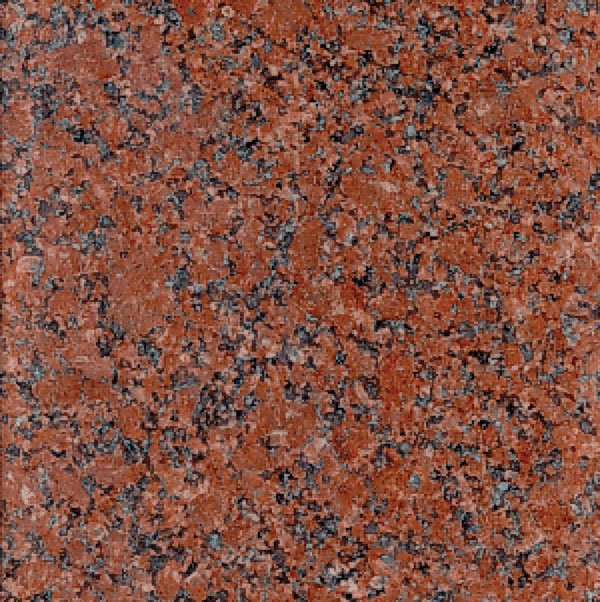Natural stone countertops used to be a luxury of the wealthy,
but thanks to steady price declines in the last decade, granite,
marble and even slate are moving into the home. And as home prices
continue to rise, consumers are lining up to take advantage not
just of the added luster, but the value stone can bring to a
home.
Natural stone countertops used to be a luxury of the wealthy, but thanks to steady price declines in the last decade, granite, marble and even slate are moving into the home. And as home prices continue to rise, consumers are lining up to take advantage not just of the added luster, but the value stone can bring to a home.
If you’ve been thinking about giving your home or back patio a modern look, try taking a look back. Current trends in home decor are leaning toward a more rustic look, said Melissa Smith, showroom manager of Morgan Hill Tile and Marble.
After the opulent decor of the 1970s and ’80s, modern tastes took a distinctly minimalist turn. Fashion brought us the monochromatic look, and it soon transferred to the home. Design was supposed to be sleek as a black cat – hard edges, even lines, a relaxing decade of simplicity. But simplicity gets boring, doesn’t it?
Flip through the pages of Architectural Digest or Sunset magazines these days, and you’ll find Mediterranean-inspired masterpieces of orchestrated chaos.
This post-modern approach to design is about embracing complexity, not surrendering to sterility. In flooring, honed stonework – pieces of assorted sizes and shapes joined to create a patchwork pattern – is all the rage. Countertops made from granite slab, containing no joints or visible seals are also popular,
and really allow the stone’s natural variation to stand out.
Slate’s natural non-slip texturing has made it a favorite of outdoor decorators for years, but that same river-worn look is working its way into the kitchen and bathroom, and retailers are scrambling to capitalize on the new application.
Not only can you choose from a wide variety of colors, ranging from crisp gray-blues to blacks, browns and golds, you can customize your flooring with inlaid accents of pewter or brass. Designs range from simple geometric square patters to Greek key edging to tiny insertable pewter dragonflies, made to look as if they’ve just landed on your wall.
“Even in the model homes they’re starting to put in more natural stone,” said Steven Fung, Manager of Gilroy Tile and Stone. “It used to be tile or linoleum, now it’s stone.”
The resurgence of such a luxurious material for more pedestrian decor might seem odd if you weren’t aware of changes in the manufacturing process for natural stone.
The last 10 years have brought large-scale automation to active quarries around the world, dramatically reducing the amount of time required to extract a block of stone, cut it into manageable sections, and reveal its natural beauty through the polish and
finish process.
According to the Natural Stone Council, a promotional group of stone retailers, a single operator can now produce in one day what would have taken 10 days in 1994. Each operator can control up to four computer-driven cutter/polishers, whose precision allows manufacturers to produce thinner, more balanced cuts of granite and marble, rather than depending on hand cuts, which could vary in thickness from 30-100 millimeters or more for the average tile section.
Quarries are active all over the world. China, India, Italy, Turkey, England – all produce stone. Quality difference varies little among different varieties, but
there are three ranks that deserve mention.
“Firsts” are stone slabs of extremely good quality, which are good for both indoor and outdoor projects. They have no cracks and good density.
“Seconds” aren’t quite as nice in their quality of their finish, but still very acceptable for outdoor applications.
“Seconds Rejects” range from “‘not too bad’ to ‘truly abysmal,'” according to A.J. McCormack, a former contractor in the United Kingdom who now operates pavingexpert.com. “Many dealers will not reveal the exact grade of their stock and in many cases price is not a reliable indicator.”
Home-owners might also be unwittingly duped by unscrupulous salespeople.
“Some distributors will show the good quality and then actually sell you the second quality,” said Fung. “It’s usually a little more porous and it might have some small cracks, but not that you would notice. Still, the customer pays for the first quality, so they should get it. [The sellers] make some extra money, but it won’t be that different when it’s installed.”
Here’s what you should know if you’re thinking about installing stone in
your home:
Granite is one of the least porous stones on the market, and thus at the top of the food chain when it comes to kitchen applications. It comes in a variety of patterns from flecked to variegated, all of which are dependent on the color of the section of a particular deposit of granite that it is cut from.
It’s main application in the home is as a counter surface, since granite is not naturally textured and would likely cause slips and falls as flooring. The stone comes in just about every color under the sun – red, pink, white, tan, green, brown, black and gray. But be prepared to experience sticker shock if you’re dead-set on blue. It’s the most expensive color on
the market due to its rarity, said Fung.
Slab countertops for the average kitchen will cost anywhere from $3,000-10,000 installed. Prices vary based on color, counter space, the type of border cut customers select and any reinforcements that existing cupboards might need to support the new slab.
Granite tile is the next best option if slab is out of your price range. Marble might be a good alternative as well.
While it may sound more chic, marble is actually inferior to granite on the geological scale. It is less dense, and therefore harder to seal.
“Marble is a little softer, but people do still use it in their kitchens,” said Smith. “I wouldn’t want to caution someone against it; I would just tell them to be sure and use a lot of sealer.”
If you’re sticking with a neutral-tone marble (one whose production demands are high), you’ll pay about $6 per square foot on average. Prices start around $5 and range up to $12, according to Fung.
Bottom line: It’s natural, it’s beautiful, and it will knock the price for beautiful countertops down to something a little more reasonable than granite. And unlike granite, tumbled marble is suitable for paving as well.
(Hey, if it’s good enough for The Donald, it’s good enough for us.)
Slate’s matte finish has a more rustic and homey appeal that makes it the down-home alternative to more showy stones like granite and marble, both of which will want to be the stars in the rooms where they’re installed. Slate’s texture also makes it a natural choice for indoor/outdoor installations, which can expand your decorating themes to encompass the entire property, not just the inside of your home.
Moreover, slate is cheap when compared to it’s flashy cousins. Expect to pay about $3.50 per square foot, though prices can range anywhere from $2.60 on up to $5 per square foot.
If you’re more comfortable with porcelain tile, check out tile made to look like natural slate pavers. To assess the quality of slate pavers, try McCormack’s test: “A simple check is to attempt to crumble a corner of a flagstone between the forefinger and thumb,” his Web-postings advise. “The poor quality will disintegrate under pressure.”
Granite and marble may require stronger bonding material and have their own setting materials, said Fung, but their necessity is dubious.
“Twenty years ago there was no specific setting material for natural stone, but that’s what people are buying, so they make it,” said Fung. “If one company comes out with a product, the rest will follow suit.”
Expect to seal your countertops every year or year and a half. Retailers should be able to direct you to a good brand, but make sure to look for one that advertises itself as an impregnating sealer, said Smith. It will fill the tiny holes in your granite or marble that can cause stains when filled by food products or other substances. One coat should be fine for granite, but several should be used for a marble countertop.
Other than that, stone just needs a little bit of TLC. Rather than using harsh cleansers or ammonia-based products like Windex, try a little bit of soapy water.
Try to wipe up oil or oil-based products like mayonnaise as quickly as possible. They can stain even a sealed stone in just a few hours.
Acidic items, like lemons for instance, can produce etching and discoloration. It may not be noticeable at first, but if your marble or granite falls in direct sunlight, all will be revealed. Make sure you wipe your counters down before heading off to bed to avoid this problem.
Some items might be best to prepare over the sink. Strawberries, wine, oils and mayonnaise are the top offenders in stone staining. When this happens, call your retailer. They should be able to recommend a professional bleacher so you can go natural worry-free.















